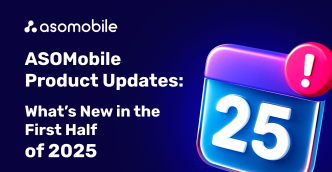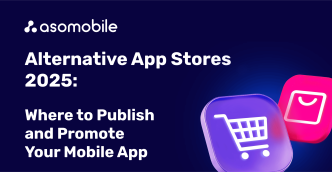How to Optimize Promo or Preview Videos
How to Optimize Promo or Preview Videos? Here, we come to the discussion that started almost from the moment ASO was introduced, and it is still going on. It turns out that agreeing on this is not so easy. Although it would seem that people with the basis of their work to interact with statistics could use it to solve this misunderstanding. That's the problem; statistics support both points of view. But we will try to understand and give an answer to this question.
First, let's answer the easy question, "Why not just use screenshots?". After all, screenshots are more accessible for the user to read and easier to take. Conversely, video captures attention more intensely due to dynamics and conveys much more information about the game, emphasizing essential points and unique features, which affects conversion. Also, according to statistics, the probability that users who watched the video will install our application increases by three times. Of course, this can be counter-argued by the fact that the video is watched after the screenshots and that, most likely, the user will install the application anyway. Yes, but still, the point of ASO is to increase conversions, and if some element allows you to do it, you should use it.
I think it's clear that we support the idea of the video, with one very important "but." Namely, the point that the video has to be done right, or we risk lowering conversion rates.
Why did the scales start tipping in favor of video?
Why is it that, from the element that started such a heated discussion, video is becoming almost a mandatory part of ASO? As we all remember, at first, Google Play didn't have its own player. Instead, you were taken to YouTube when you wanted to watch a video. For users, it was inconvenient, extra time was wasted, and the moment of engagement was lost. The company realized their omission and corrected it; users now stay on the store page and are not redirected anywhere.
Another major factor was the addition of the ability to preview videos. This began to bring out all the strengths of videos while removing the need to launch them in a separate window, which was a significant hurdle for users.
Does the video on the app page work for every app or not?
So what is it now? So, should we, or even have to, make videos for every app? This is where the counterarguments come into play. Not everyone can afford it because you must spend a decent amount of money to make a high-quality video. As a result, some companies decide to make videos independently, and sometimes they don't produce the quality they need to. Consequences follow this. While a good video can increase the conversion rate by 25 percent, a wrong video can decrease it by 12 percent.
When should we add video, then? We need a video with all its tools if we optimize or develop a game. Video will often be the final argument for the user, who decides whether they want to download the game. It is where the potential player sees the gameplay, atmosphere, and dynamics. At the same time, just an application can feel great without video. But we can only get an unambiguous answer from A/B testing, which we will discuss later.
Preview or promo video in Google Play and App Store
We all realize that there are two giants in our sphere. And it's no secret that while the concept is the same, the approach to its execution differs, starting from the target audience and ending up with app ranking factors. Let's look at how video can be used in these two stores.
App Store App Preview Video
App Store is undoubtedly one of the biggest and most popular platforms for downloading and installing mobile apps for iOS devices. Before users download a particular app, they can watch a preview video of that app.
By being displayed and played on the search results page and occupying the first slide slot, the video allows users to see how the app works and get a visual context of its functionality. This allows users to understand better what they can expect from the app and determine if it meets their needs and expectations.
For app developers, preview videos are a powerful marketing tool. They can demonstrate our product's key features and benefits in videos, attracting new users. Who, in turn, can evaluate the app without downloading it to their device.
Google Play Promo Video
Google Play, as one of the main competitors of the App Store, can't stay on the sidelines and do nothing. Therefore, in 2019, Google Play announced promos that will improve users' experience interacting with the platform and give more opportunities for developers to reach out to their target audience.
Don't conclude that Google Play Promos and App Store preview videos are identical. Yes, it is also displayed on the search results and app pages. Another difference between the promos is that they can be 30 to 120 seconds long. Whereas the App Store gives us 15 to 30 seconds.
Top tips for creating videos for app pages:
We think writing a blog about the importance of video in ASO rather than writing guidelines would be highly illogical. So, we have picked up some essential tips to help us make a high-quality video.
- The most crucial part of the video. In our blogs, it has already popped up many times that the most critical part is the first few seconds of the video. Because they determine whether the user will be interested in watching further, we'd better not insert a logo or team name at the beginning. Don't waste precious seconds. We need to make the most of our time to focus on the features of our app or game.
- Video Cover. When users have video autoplay disabled, the cover art will be the thing that should ignite their interest in the app. It should be seen as just another screenshot and treated accordingly, maybe even more seriously, since the first impression will sometimes be formed thanks to the video cover.
- Audio. Remember that many users will watch our video without audio. Therefore, making it the primary source of information for the user is not advisable.
- Information delivery. The optimal way to convey information is text combined with a picture. The main thing is not to over-saturate the screen with it; try to be brief but as informative as possible. The best variant is when the text appears and the video demonstrates what it is written about.
- Scale. We consider that the video is primarily made for mobile. Therefore, we need to keep track of the saturation of details, the readability of the text, and the ability to understand what is happening on the screen. And, of course, remember that the video should take up all the space on the screen if it is unfolded.
- Plan. For a high-quality video, we need to plan what we need to convey, how we will convey it, and to whom. We need to decide on the target audience and analyze all this.
- Split your video into parts. This is useful for us in several ways. First, it directs the player's attention to specific app features using text that might interest them. Second, it will help us with A/B testing.
The universal answer to the question of A/B testing
Here, we come to the part that will answer whether we need video or not. The usual A/B testing is not enough, we will need to focus on the video. We must understand where the user loses interest and then analyze why. That's why it's a good idea to divide the video into parts to make it easier to identify the problem.
Knowing the peculiarities of promos and preview videos would also be good.
| Google Play Store | Apple App Store | |
| NAME | App promo video | App preview |
| LENGTH | 30-120 seconds | 15-30 seconds |
| RESOLUTION | Landscape | Landscape and portrait |
| APPROVAL PROCESS | None | Manually approved by Apple |
| PLACEMENT | App store listing and a few branded search | App Store listing and search results |
| AMOUNT | 1 per localization | Up to 3 videos per localization |
| AUTO-PLAY | No | Yes |
| FILE FORMAT | YouTube URL | MOV, MP4, M4V file |
| THUMBNAIL | Same as the YouTube thumbnail | Select poster frame |
| CONTENT CONSTRAINTS | Follow the guideline from Google Play | Follow the guideline from App Store |
The long-awaited answer to the question
Whether our application needs video is not a simple decision, but the answer can be found with some digging.
If we are developing ASO games, we should think about video. After all, the game's dynamics are always a priority for users. They need to feel it.
Applications, in turn, do not exclude the need for video, but in applications, we all appreciate the interface, which is mostly static. That is why there is no such urgent need for video.
As we can see, videos are integrated not only on the pages of applications or games but also on the home page and in the search results of Google Play and App Store. Therefore, it is becoming more and more difficult to ignore this element.
Video is the most interacted with on the Internet. It accounts for 82% of all Internet traffic, which means it is the most popular product on the Internet. This is most likely the reason why video is so actively integrated. Google Play and the App Store realize that people are getting used to interactions with videos, and so they are starting to add them. Also, showing what its benefits are: more information, a better understanding of app features, and how it works. In a few years, the video will be the first thing on an app page that users' fingers will reach for to get information.
 Українська
Українська  Русский
Русский  Español
Español 






